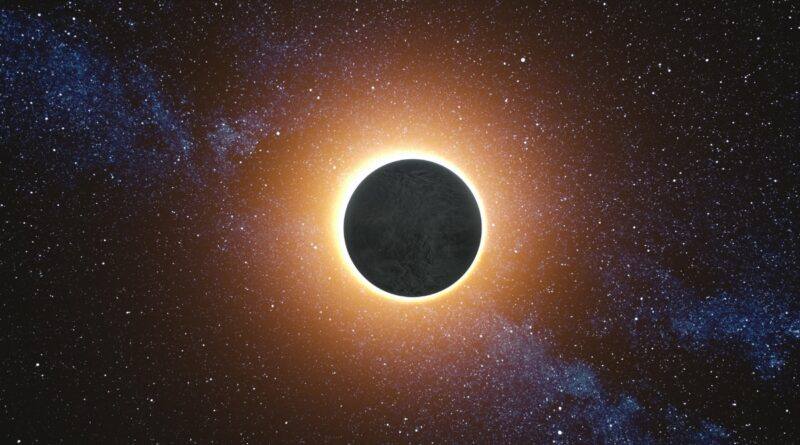A Powerful Eclipse Sparks Wondrous Curiosity Around The World
By WFY Bureau Desk | Science & Technology | August 2025 Edition
The Last Solar Eclipse of 2025: A Celestial Ballet Beyond Borders
As the calendar edges toward the final quarter of 2025, skywatchers across the globe are preparing for one last astronomical wonder, the second and final solar eclipse of the year.
Unlike the total eclipse that often draws dramatic attention, this one is quieter but no less scientifically significant. It is a partial solar eclipse, set to unfold during the late hours of September 21 and early hours of September 22. Although India will not witness the event directly, the global scientific community remains captivated.
What Exactly Is a Solar Eclipse?
At its core, a solar eclipse is a cosmic alignment. The Moon passes between the Earth and the Sun, partially or fully blocking the Sun’s rays from reaching the Earth. The phenomenon occurs only during a new moon, when the three celestial bodies briefly form a straight line, a condition known as syzygy. Depending on the alignment and distances involved, the eclipse may be total, partial, or annular.
In the case of a partial eclipse, like the one this September, only a section of the Sun’s disc is obscured. For observers within the narrow band of visibility, the Sun appears to wear a cosmic crescent, a slice of shadow carved out by the Moon.
Key Details of the 2025 Solar Eclipse
- Date: Night of September 21 into early September 22, 2025
- Start Time (IST): Approximately 10:59 PM
- Peak Time (IST): Around 1:11 AM
- End Time (IST): Close to 3:24 AM
- Duration: About 4 hours and 25 minutes
- Type: Partial Solar Eclipse
- Visibility: Only in select regions in the Southern Hemisphere — particularly eastern Australia, New Zealand, Antarctica, and parts of the South Pacific Ocean
Due to time-zone differences and the specific angle of celestial alignment, the eclipse will remain invisible across India, Europe, Africa, and the Americas. For India, this eclipse will remain an academic and symbolic event, observable only through global data, simulations, and NASA’s live feeds.
Cultural Perspective: What Happens When an Eclipse Isn’t Visible?
In Indian spiritual tradition, solar eclipses hold deep religious significance. The period surrounding an eclipse, known as Sutak, is traditionally considered inauspicious. During Sutak, temples may close, food is avoided, and sacred rituals are paused. However, this cultural observance is conditional — Sutak is valid only when the eclipse is visible from a specific location.
Since the 2025 solar eclipse won’t be visible from any part of India, no Sutak period will be observed. As a result, temples will remain open, daily life continues without interruption, and religious ceremonies scheduled on September 21 or 22 will proceed normally.
Coincidentally, Pitru Paksha, a 16-day period of honouring ancestors, concludes on this day, making it a spiritually significant moment for many Hindus.
Solar Eclipses: Science, Myths, and Modern Observation
Human fascination with eclipses stretches back millennia. In many cultures, solar eclipses were seen as omens — divine messages or warnings of impending doom. Ancient Indian scriptures refer to the mythological demon Rahu, who swallows the Sun during an eclipse. In contrast, modern science explains these events with celestial geometry and predictable orbital mechanics.
Today, the scientific lens has redefined eclipses not as harbingers, but as opportunities.
Eclipses offer rare chances for astronomers to study the solar corona, the Sun’s glowing outer atmosphere, otherwise obscured by the Sun’s intense light. Even during a partial eclipse, researchers monitor changes in solar radiation, atmospheric temperature, and electromagnetic fluctuations.
Beyond September: Clarifying the Confusion Around August 2
A viral claim recently made the rounds suggesting that the “longest solar eclipse of the century” would occur on 2 August 2025, plunging the Earth into six minutes of darkness. While the story captured imaginations, it is inaccurate.
According to NASA, the longest solar eclipse of this century will actually occur on 2 August 2027, not in 2025. That future event is expected to last over six minutes, casting a long shadow across parts of North Africa and the Middle East. The excitement surrounding that 2027 eclipse is valid — but it’s not relevant to this year.
So, the only solar eclipse remaining in 2025 is the September 21–22 partial eclipse.
Eclipse Season: A Month of Celestial Wonders
Interestingly, this September’s solar eclipse will not be an isolated event. Earlier in the same month, on 7 September 2025, a penumbral lunar eclipse will grace the night skies. Though subtle compared to solar eclipses, lunar eclipses still hold fascination for stargazers and cultural enthusiasts.
In astronomical terms, the occurrence of both a solar and lunar eclipse within the same month is not unusual. It happens when the Sun, Earth, and Moon are aligned closely enough during the new and full moon phases — forming what’s known as an “eclipse season.” This September is one such period, offering a double dose of celestial drama for observers worldwide.
Global Participation in a Localised Event
Even though India will miss the visual spectacle, interest in the eclipse remains high among space enthusiasts, astronomers, and students across the country. Social media, international observatories, and platforms like NASA TV will offer real-time updates, live feeds, and scientific breakdowns. Several planetariums and astronomy clubs in India plan to host midnight viewing sessions, webinars, and explainer videos to mark the occasion.
For diaspora communities, especially those living in Australia and New Zealand, the eclipse offers a chance to engage with the cosmos first-hand. In some cities, public viewing parks, educational institutions, and astronomy clubs are setting up telescopes and live commentary stations to guide observers through the event.
Are Solar Eclipses Dangerous to Watch?
Yes, if not done properly. Watching a solar eclipse without appropriate eye protection can cause permanent retinal damage, a condition known as solar retinopathy. Sunglasses are not sufficient. Only certified eclipse glasses or solar filters designed for direct viewing should be used.
For photography or telescopic viewing, special solar filters must be mounted in front of the lens. Smartphone cameras without filters should not be used to capture the Sun directly.
Since the 2025 event is a partial eclipse, many will be tempted to observe casually. Caution remains essential. The danger is not reduced simply because the eclipse is partial.
A Future Worth Watching: Why Eclipses Matter
Solar eclipses aren’t just dramatic spectacles; they are gateways to deeper understanding.
Each eclipse offers scientists an opportunity to explore:
- Solar atmosphere: Eclipses allow astronomers to study the Sun’s corona and its temperature gradients.
- Magnetosphere and ionosphere: Eclipses alter Earth’s magnetic fields and upper atmosphere, which scientists monitor for data.
- Public science engagement: Eclipses create global conversation around astronomy, physics, and cultural meaning.
- Cultural anthropology: Researchers examine how eclipse beliefs and myths have evolved over centuries in different civilisations.
As our scientific tools improve and our curiosity deepens, each eclipse becomes more than just a moment in the sky — it becomes a lens into our cosmic place.
What’s Next? Looking Beyond 2025
After the September event, the next solar eclipse India will witness is scheduled for March 29, 2026, a partial eclipse visible from northern parts of the country. The next total solar eclipse visible in India won’t occur until March 20, 2034, giving sky watchers plenty of time to plan for a full celestial spectacle.
Globally, 2026 and 2027 are shaping up to be remarkable years for eclipse hunters, especially the August 2, 2027 event, which will offer one of the longest total eclipses in modern history, with over six minutes of darkness in some regions.
As the second solar eclipse of 2025 arrives this September, quiet, distant, and invisible to Indian skies, its presence is nonetheless a powerful reminder. A reminder of the cosmic ballet constantly unfolding above us, regardless of whether we’re awake to see it. In a world dominated by the noise of the everyday, eclipses offer a moment of awe, unity, and deeper thought.
Even when we cannot see the shadow move, we can still feel the beauty of the motion.
Disclaimer: This article is intended for educational and informational purposes. Observations of solar eclipses should be conducted using proper eye protection. The cultural interpretations and astronomical data mentioned are based on public records and standard celestial forecasts. The WFY does not promote or endorse any unverified spiritual or scientific claims.




